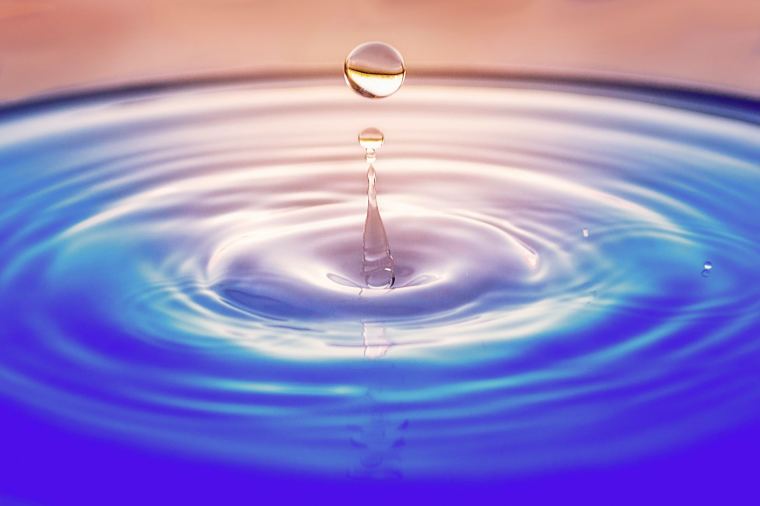
Water has amazing properties. Some researchers believe that water possesses the property of memory, with water “remembering” where it has been, what has been near it, and who has handled it in the past. They believe that water can hold some sort of imprint or “memory” of substances that have been exposed or dissolved in it. Some researchers even believe this holds true after high dilution, even to the point of no molecule remaining in the water itself. This phenomenon is called “water memory”.
There have been notable studies done with water memory. These include studies done by Jacques Benveniste, Bernd Kröplin, Luc Montagnier, Masaru Emoto, Emilio Guidice, Vitold M. Bakhir, and Alexander Stiepanow.
The researcher Jacques Benveniste (1935-2004) was the first to coin the term “water memory” in his 1988 research article published in Nature. He wasn’t looking for water memory, but was instead researching homeopathy. He reported that white blood cells called basophils can be activated to produce an immune response by solutions of antibodies which have been diluted so much they contain none of these biomolecules. It was like the water molecules somehow retained a memory of the antibodies they had previously been in contact with so that a biological effect remained when the antibodies were no longer present. Benveniste was more interested in the implications for homeopathy, not water research.
He also discovered water holds a “memory,” and can digitally record and then digitally rewrite other water even when the substance has been removed. He compared it with another chart obtained in the case of ordinary water not exposed to the biomagnetic field of the human being. These two charts were unalike.
In 2002, Bernd Kröplin published his findings concerning water memory research in his book World in a Drop. He wasn’t looking for water memory, he wanted to develop a simple “space machine” for astronauts onboard space shuttles, allowing astronauts to cure minor health defects by themselves based on bio-energetic treatment procedures. This led to an accidental discovery – even the weakest magnetic field alterations, not detectable by conventional measuring devices, reflected upon the water could be seen under a darkfield microscope. The experiment was carried out by a group of students who each obtained one drop of water from the same body of water, all at the same time. Through close examination of the individual droplets, it was seen that each droplet produced different images.
In a second experiment, a flower was placed into a body of water, and after a while a sample droplet of the water was taken out for examination. The result produced a mesmerising pattern when hugely magnified, but all droplets looked very similar. The same experiment was done with a different species of flower. The magnified droplet looked completely different, thereby determining that a particular flower is evident in each droplet of water. Kröplin et al believe that as water travels it picks up and stores information from all the places it’s travelled through.
Nobel laureate Luc Montagnier, a virologist who published a paper in 2009 called Electromagnetic signals are produced by aqueous nanostructures derived from bacterial DNA sequences, claimed he could detect radio waves emitted by the DNA of pathogenic bacteria and viruses massively diluted in water. He’s hopeful his research with water memory will help to develop techniques that will treat diseases.
When discussing his research findings Montagnier said “...we may use these findings not just for diagnostics but also for treatment…It’s possible that electromagnetic waves at some frequency will kill the waves produced by bacterial DNA” ( Scientists Prove That Water Has Memory? Water Memory Research – ARK Crystal (arkcrystals.com)).
Dr. Masaru Emoto has carried out worldwide water research and how it affects us and our environment. According to Dr. Emoto thoughts and words have unique magnetic codes, which can interact with water. His experiments with water showed that the water reacts to our words, and depending on what we say and what emotions accompany our words it creates either beautiful and harmonious shapes or ugly and irregular ones. The behaviour of this memory can be compared to our modern CDs storing digital data or magnetic tape.
Theoretical physicist Emilio del Giudice at the University of Milano, Italy, could explain together with co-operators that water can store information over long periods of time.
Russian inventor and mining engineer Vitold M. Bakhir conducted many water memory experiments confirming the earlier results of others’ experiments.
Russian scientist Alexander Stiepanow put a dish with distilled water on the forehead of a man lying down. It was made to save microenergetic information extracted from the man. Then, Stiepanow began to study a graphic record of water used in his experiments with a special device, and compared it to another chart obtained in the case of ordinary water, not exposed to the biomagnetic field of a person. These two charts were unalike. Another experiment involved putting a glass of distilled water on exactly the same place, but on a photograph of the man’s forehead.
Then the graphic record obtained in the second experiment was compared with the first one. The two graphic records were identical. The graph for water exposed to contact with the man’s forehead gave the same reading as the graph exposed only to the man’s forehead on the photograph. This experiment was repeated several times. The result was always the same.
Water truly is an amazing substance.

Katelin Staples is from Gladstone, Queensland. By day Katelin is employed as a proofreader. Katelin has a passion for discovering the deep things of God and how they affect the world around us.